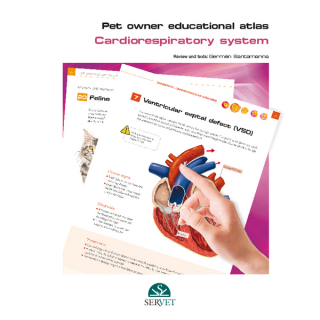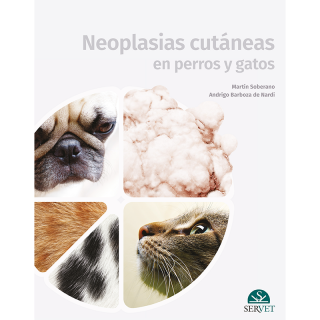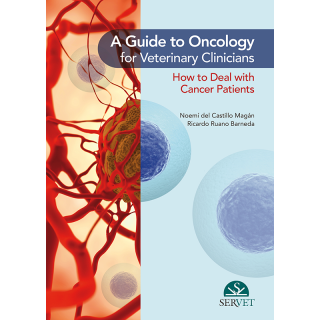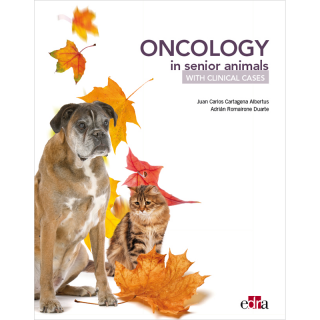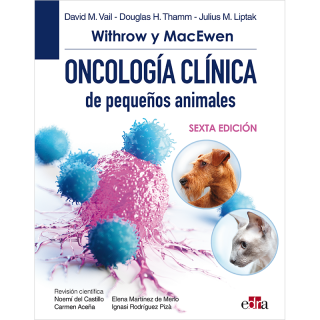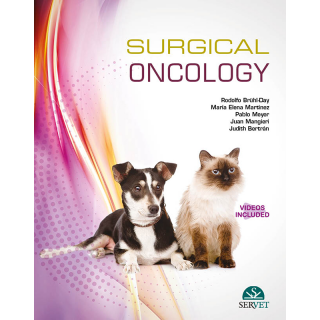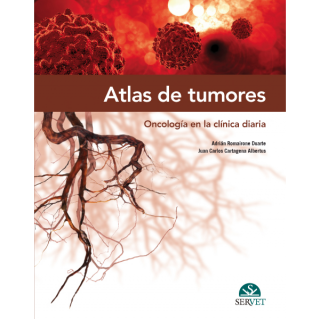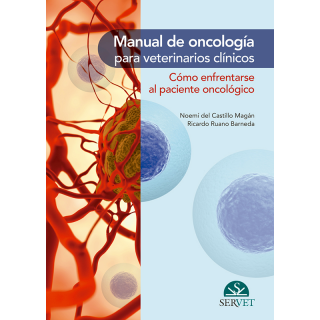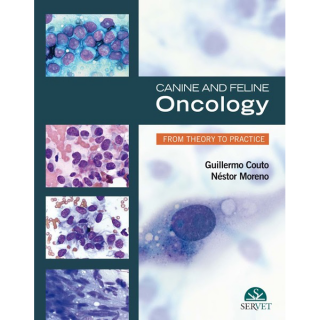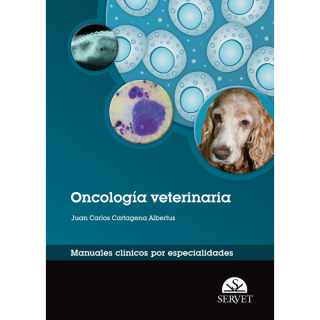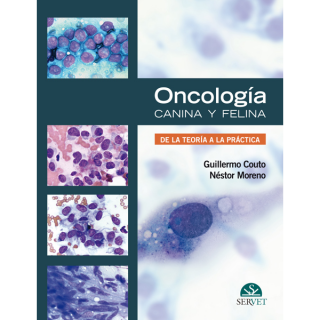Envío gratuito en compras superiores a 19€ (Península y Baleares)
This book describes a practical, simple work protocol which may be useful to most of those first-opinion veterinary practitioners who have to deal with cases of neoplasia in their practices. It combines the experience in clinical oncology of a first-opinion veterinary surgeon and the knowledge of a veterinary practitioner specialised in this field, and includes a wide variety of images of the most common tumours in small animals as well as in exotic species. Some key aspects such as how to collect and send samples to the laboratory, and basic surgical techniques in oncology are also addressed.
General aspects of clinical oncology
1. Basic principles of the diagnostic approach
Paraneoplastic syndromes
Clinical signs of suspected cancer
- Abdominal enlargement
- Alopecia
- Nail disorders
- Cutaneous calcinosis (calcinosis cutis)
- Faecal alterations
- Vomiting
- Oestrogen-secreting tumours
- Haematuria
- Horner syndrome
- Jaundice
- Limb swelling
2. Sample collection and transport to the laboratory
Sample collection
- Biopsies and punctures
- Biopsy material
- Endoscopic biopsy
- Fixation and storage of the sample
3. Principles of surgical oncology Safety margins
Surgical manipulation of the tumour
- Preplanning
- Proper handling
- Use of antibiotics
- Estimation of caloric and electrolyte requirements
- Cancer types by system
4. Tumours of the reproductive system in males and females
Female reproductive system:
- mammary tumours
- Introduction
- Histological classification
- Prognostic factors
- Treatment
Male reproductive system: testicular neoplasms
- Introduction
- Tumour characteristics
- Diagnosis
- Treatment
- Prognosis
Male reproductive system: prostatic
- neoplasms
- Introduction
- Clinical signs
- Diagnosis
- Treatment
5. Skin tumours
Aetiology
Classification
Diagnostic approach in the clinic
- The importance of cytology
Common skin tumours
- Papillomas
- Squamous cell carcinoma
- Neoplasms of the sebaceous glands
- Adenoma of the perianal glands or hepatoid cells
- Lipomas
- Schwannoma
- Melanoma/melanosarcoma
- Histiocytoma
- Epitheliotropic lymphoma
- Mastocytoma
- Trichoepithelioma
- Fibrosarcoma
6. Tumours of the digestive system
Oral malignancies
- Overview
- Canine oral tumours
- Feline oral tumours
Gastric neoplasms
- Overview
- Canine gastric adenocarcinoma
- Canine gastric leiomyoma or leiomyosarcoma
- Alimentary lymphoma
- Canine gastric plasmacytoma
Intestinal neoplasms
- Overview
- Rectoanal polyps and papillary adenoma
- of the rectum
- Intestinal adenomas and adenocarcinomas
- Intestinal carcinoid tumours
- Alimentary lymphoma
7. Neoplasms of the eye and orbit
Neoplasms of the eyelids
- Neoplasms of the eyelids in dogs
- Neoplasms of the eyelids in cats
Other neoplasms
Intraocular neoplasms
Orbital neoplasms
Mesenchymal tumours
Secondary intraocular tumours
Diagnostic investigation
Treatment
8. Neoplasms of the limbs. Osteosarcoma
Aetiology
- Physical factors
- Genetic factors
Clinical signs
- In the limbs
- In the axial skeleton
- General clinical signs of systemic disturbance
Diagnosis
- Diagnostic radiology
- Cytological and histopathological diagnosis
9. Neoplasms in non-traditional species
Common tumours in non-traditional species
- Renal adenocarcinoma in a parakeet
- Osteosarcoma in a ferret
- Feather cysts
- Melanocytic tumour and squamous cell carcinoma
- Uterine tumour in a rabbit
- Abdominal tumour (ovarian) in a squirrel
- Mastocytoma in a goshawk
- Thymoma in a Bonelli’s eagle
- Bile duct carcinoma
- Cutaneous xanthomas
- Papilloma in the external ear canal of a Russian hamster
10. Practical chemotherapy
Treatments
- Adjuvant chemotherapy
- Metronomic chemotherapy
- Small molecule inhibitors (SMI)
Side effects of chemotherapy
- Neutropenia and sepsis
- Gastrointestinal disorders
Annexes
Annex 1. Most commonly used drugs in veterinary oncology
Annex 2. Weight to body surface area conversion table
References
- Autor/es Adrián Romairone Durarte, Juan Carlos Cartagena Albertus
- Fecha de edición diciembre 2014
- Nº Páginas 200
- Encuadernación Tapa dura
- Tamaño 22 X 28
- Idioma Inglés






